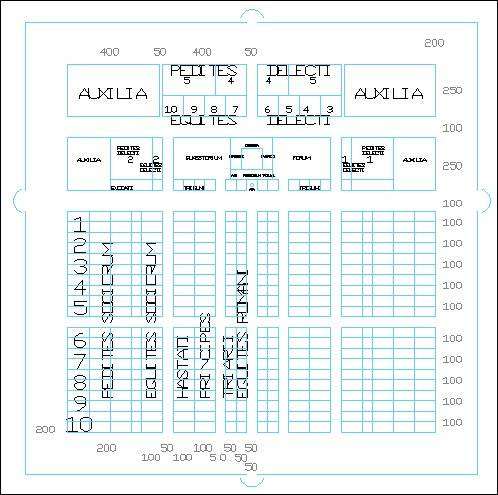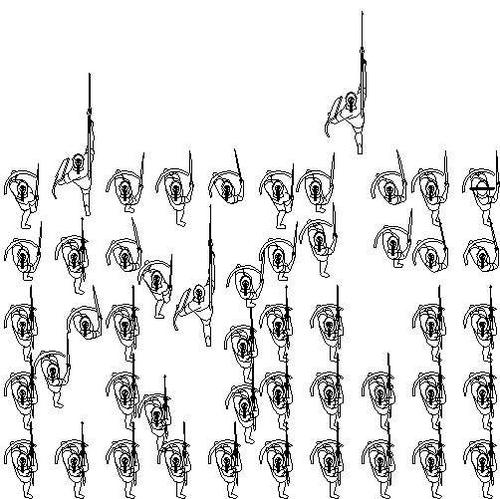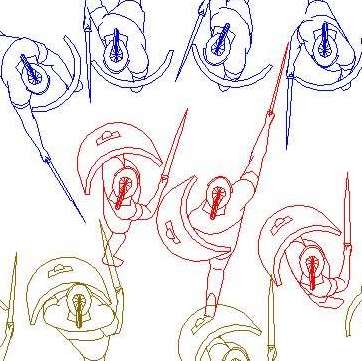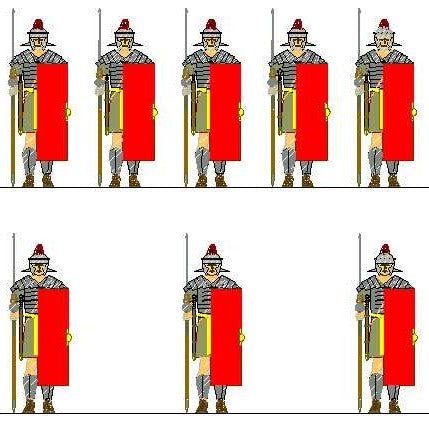The march
Developing a complete model of a representative Roman army on the march is more complicated than might be thought. Delbrück, who wrote over 500 pages on the Roman army, has just a single sentence about the march. He simply says that he does not know enough about how the army moved to speculate. However there are some other sources that do speculate. I have drawn from several books and web sites: Harry Pratt Judson, Caesar's Army; Peter Connolly, Greece and Rome at War; and John Peddie, The Roman War Machine; J. G. Landels, Engineering in the Ancient World and several websites. Information from these sources is summarized in a separate page called Supplemental Information.
Because of the number of illustrations the section on the march has been divided into several pages so that each will load a bit faster. The headings are:
March: Basics An outline of some of the basic factors that influence a depiction of the army marching, including roads, spacing of ranks and files, Roman transport systems and the makeup of the "typical" army.
March: Components Descriptions of the units and soldiers of the legion and auxiliaries attached to the legion.
March: Baggage Details on the baggage train and the noncombatant units attached to the legion: scribes, engineers, artillery, servants, food and supply baggage trains.
March: The Army Additional units associated with the army as a whole: the commanding general, the headquarters staff, the auxiliary cavalry, other special units and the baggage train associated with these units.
March: Order The order of march: the arrangement of units in the column of march.
March: a Day's The movement of the army from one camp to the next shown in 1/2 hour increments.
March: Attack Analysis of the vulnerability of the marching column to surprise attack.
March: Supplemental Citations from references and information about mules as pack animals, horse-drawn carts and ox-drawn wagons.




